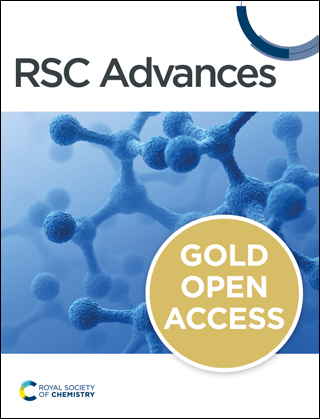1,1′-双唑烯类BINOL†的合成与拆分
IF 4.6
3区 化学
Q2 CHEMISTRY, MULTIDISCIPLINARY
引用次数: 0
摘要
具有轴向手性的联芳基在不对称催化等领域得到了广泛的应用,但联芳基链通常由苯类芳香环组成,非苯类的联芳基很少。本文报道了首次以对映纯形式制备的(非苯类)1,1′-双唑烯-2,2′-二醇(“1,1′-BAzOL”),并测定了其外消旋的屏障。此外,我们将1,1 ' -双唑烯-2,2 ' -二醇转化为相应的2,2 ' -双膦酸盐,从而证明了通过交叉偶联实现官能团相互转化,并突出了多样化的潜力。本文章由计算机程序翻译,如有差异,请以英文原文为准。

Synthesis and resolution of a 1,1′-biazulene analogue of BINOL†
Biaryls exhibiting axial chirality have been extensively exploited in fields such as asymmetric catalysis, but the biaryl linkage typically consists of benzenoid aromatic rings, with non-benzenoid biaryls being scarce. Here we report the first preparation of a (non-benzenoid) 1,1′-biazulene-2,2′-diol (“1,1′-BAzOL”) in enantiopure form and determine its barrier to racemisation. Furthermore we transformed a 1,1′-biazulene-2,2′-diol into the corresponding 2,2′-bis(phosphonate), thereby demonstrating functional group interconversion through cross coupling and highlighting the potential for diversification.
求助全文
通过发布文献求助,成功后即可免费获取论文全文。
去求助
来源期刊

RSC Advances
chemical sciences-
CiteScore
7.50
自引率
2.60%
发文量
3116
审稿时长
1.6 months
期刊介绍:
An international, peer-reviewed journal covering all of the chemical sciences, including multidisciplinary and emerging areas. RSC Advances is a gold open access journal allowing researchers free access to research articles, and offering an affordable open access publishing option for authors around the world.
 求助内容:
求助内容: 应助结果提醒方式:
应助结果提醒方式:


